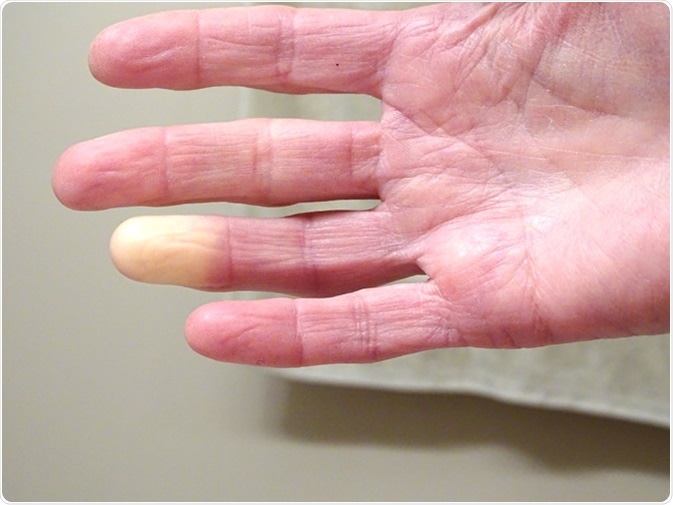In general, toxic substances such as drugs (marijuana, cocaine, etc.), alcohol, food (mainly sugar and flour), tobacco, etc. are psychoactive substances that act by mimicking the function of neurotransmitters. The brain that transmits information from one neuron to another, causing a response in the reward, satisfaction, or joy center of the brain. That is why there are people who make us feel good and overcome difficult moments.
If you don’t already know Fitenium is a free, mobile and video-based social network for users who train strength and/or body weight exercises. At Fitenium users can find free personalized routines, follow their performance, compete and get discounts at nutrition stores and sports equipment. Download it here.
The problem is that continued use of these substances replaces our original reward abilities and creates a sense of well-being.
At that time, it is necessary to consume the substance in question to avoid suffering anxiety, tremors, sweating, dizziness, delusion, vomiting, sleep disorders and other symptoms that make up the withdrawal syndrome.
The withdrawal syndrome depends on the substance consumed, the moment in which it is consumed and the individual’s body.

Published on Unplash by Geert Pieters
alcohol
In moderate drinkers, withdrawal symptoms begin 12 to 24 hours after stopping drinking and can cause symptoms such as tremors, weakness, cold, headache, dehydration, and nausea.
In addition to the above, another more serious symptom called paralysis appears in drinkers within 2-10 days. Initially it causes anxiety, disorientation, nightmares, excessive sweating and deep depression, although fever, rapid heartbeat, seizures and delusions can also appear.
nicotine
Tobacco withdrawal syndrome becomes stronger the longer a person smokes. The most common symptoms are the uncontrollable desire to smoke again, tension, headache, irritability, sleepiness or insomnia, and increased appetite and weight.
CANNABIS
Marijuana is one of the most consumed drugs in the world, especially among adolescents and young people. Its effects include changes in sensory perception (brighter colors can be perceived), changes in perception of time, changes in mood, poor memory and delusions, and delusions, especially when ingested in large amounts.

Published on Unplash by Toms Rīts
Quitting marijuana can lead to symptoms such as hypersensitivity, anxiety, drowsiness, and loss of appetite, which can lead to an uncontrollable desire to use marijuana again.
drugs
Morphine, hashish, heroin, codeine or oxycodon belong to this group and are some of the substances that act by suppressing the nervous system. A small amount can cause euphoria, but high levels can slow brain activity and cause dizziness and malaise.
The first withdrawal symptoms are vigorous breathing, watery eyes, runny nose, and sweating. Then comes hyperactivity, hypervigilance, rapid heartbeat, chicken skin, and fever. Eye dilation and tremor, cold, muscle pain, abdominal pain and diarrhea may occur.
anti anxiety medication
Barbituric acid or benzodiazepines are part of this group of prescription substances that can control anxiety or allow you to sleep, although high doses can cause severe poisoning…
Withdrawal causes a severe and life-threatening reaction, similar to an alcohol shake. Its main symptoms are weakness, malaise, depression, tremors, dehydration, delusions, delusions and insomnia.

Published on Unplash by Nathaniel Vala
amphetamine
Amphetamine is used as a medically controlled weight loss drug, but the other is not controlled as a substance that helps you stay awake longer than usual for work, study, or recreation. .. Methamphetamine, MDMA or ecstasy have also been included in the same group and have become widely known as illegal substances.
When its use is stopped it causes extreme fatigue and drowsiness, but some people are very anxious. The feeling of depression can increase to the point where a suicidal tendency appears.
cocaine
Cocaine is another very powerful nervous system stimulant. Resistance to the drug develops rapidly, increasing addiction and dosage.
Withdrawal symptoms include extreme fatigue, depression, suicidal thoughts, and delusions.
When to ask for help
Even if a person who regularly uses drugs decides to stop using drugs, that is not enough. Addiction is a disease with physical symptoms and, like any other disease, it may require the intervention of a doctor to prescribe the prescribed treatment to cure it.
Withdrawal Syndrome Treatment
The treatment that each patient receives depends on their particular case, but it usually consists of three pillars.
- Medical perspective. The use of medications helps to alleviate the physical effects of withdrawal symptoms such as dizziness, anxiety, vomiting, fever, or insomnia. In some cases, the withdrawal syndrome can lead to severe depression and even suicidal tendencies, which may require the patient to be hospitalized.
- Psychological perspective. To avoid recurrence, you not only manage your physical symptoms, but also have a therapeutic task that helps you understand why the patient started using it, the emotions associated with the drug in question, and situations in which the patient may return to it. use it.
- Social and family perspectives. There are two sides to this perspective. On the one hand, achieving family support and the patient’s environment in the face of the disease, since addiction is a great shame. On the other hand, avoid environments where the consumption of prohibited substances is endorsed or justified. This is especially important for socially accepted drugs like alcohol and tobacco.




